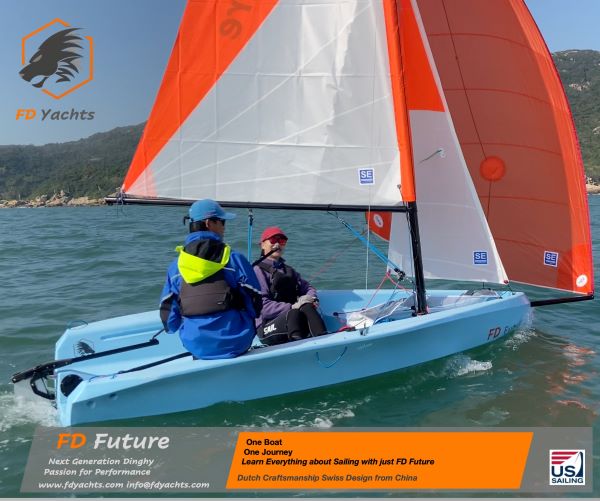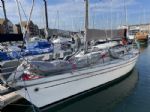












Boats for sale
| Rossiter Pintail Mortagne sur Gironde, near Bordeaux |
 |
| Laser 28 - Excellent example of this great design Hamble le rice |
 |
List classes of boat for sale |
Tacking at windward mark to starboard |
Post Reply 
|
Page <12 |
| Author | ||
Brass 
Really should get out more 
Joined: 24 Mar 08 Location: Australia Online Status: Offline Posts: 1151 |
 Post Options Post Options
 Quote Quote  Reply Reply
 Topic: Tacking at windward mark to starboard Topic: Tacking at windward mark to starboardPosted: 18 Jun 13 at 10:39am |
|
I'm not much interested in what rules 'suggest'. I prefer to deal in what they say. Your assertion about rule 18.1 is wrong. Rule 18.1, second sentance, followed by the subparagraphs quite expressly says: 'However it [rule 18] does not apply ...' If anyone is still in any doubt, see Case 95
In this case there is no ambiguity. In the rare cases that a rule is ambiguous, trying to second guess what the rules drafters 'intended' is rarely a good way to resolve it. Careful analysis of what the rules actually say, and appropriate research in the Cases, Appeals, Calls and Q&A is usually much more reliable. I can't see why the situation needs to be covered in the TR Call Book: the rules application is, IMHO quite simple and straightforward, and the umpiring process should get to that result: how do you think I did the analysis in the first place? |
||
 |
||
Brass 
Really should get out more 
Joined: 24 Mar 08 Location: Australia Online Status: Offline Posts: 1151 |
 Post Options Post Options
 Quote Quote  Reply Reply
 Posted: 18 Jun 13 at 10:43am Posted: 18 Jun 13 at 10:43am |
|
Possibly Andymck was driving B <g> and thought 18.3 would not go on, and he would get inside mark-room under 18.2( a ).
|
||
 |
||
Rupert 
Really should get out more 
Joined: 11 Aug 04 Location: Whitefriars sc Online Status: Offline Posts: 8956 |
 Post Options Post Options
 Quote Quote  Reply Reply
 Posted: 18 Jun 13 at 10:58am Posted: 18 Jun 13 at 10:58am |
|
|
Or more likely it was to do with the situations that team mates were in.
|
||
|
Firefly 2324, Puffin 229, Minisail 3446 Mirror 70686
|
||
 |
||
andymck 
Far too distracted from work 
Joined: 15 Dec 06 Location: Stamford Online Status: Offline Posts: 397 |
 Post Options Post Options
 Quote Quote  Reply Reply
 Posted: 18 Jun 13 at 1:37pm Posted: 18 Jun 13 at 1:37pm |
|
|
Actually I was more concerned about the English definition of the word thereafter in 18.2b. With the provision of breaking that stated in 18.2c:
When a boat is required to give mark-room by rule 18.2(b), she shall continue to do so even if later an overlap is broken or a new overlap begins; if she becomes overlapped inside the boat entitled to mark-room, she shall also give that boat room to sail her proper course while they remain overlapped. However, if the boat entitled to mark-room passes head to wind or leaves the zone, rule 18.2(b) ceases to apply. This appears to contradict 95's wording, but as both boats tacked in that case,not the scenario. We still also have not discussed the role of rule 17 here, but both 17 and 18c give protection the windward boat. I am not trying to second guess the rule makers. All I am doing is asking why 18.1 overrules 18.2c which seems to have this situation covered? And only mentions the boat entitled to mark room tacking. Edited by andymck - 18 Jun 13 at 1:54pm |
||
|
Andy Mck
|
||
 |
||
Brass 
Really should get out more 
Joined: 24 Mar 08 Location: Australia Online Status: Offline Posts: 1151 |
 Post Options Post Options
 Quote Quote  Reply Reply
 Posted: 19 Jun 13 at 12:39am Posted: 19 Jun 13 at 12:39am |
|
|
Andymck is asking why there are two 'switch-off' provisions operating when a boat tacks in rule 18:
Let us consider the case where a tack switches off rule 18.2( b ) but does not switch off the whole of rule 18. This might occur in team racing or match racing. So the above demonstrates that, while they will often overlap one another, rule 18.1 and rule 18.2( c ) last sentance can have different work to do, at least sometimes.
|
||
 |
||
Post Reply 
|
Page <12 |
| Forum Jump | Forum Permissions  You cannot post new topics in this forum You cannot reply to topics in this forum You cannot delete your posts in this forum You cannot edit your posts in this forum You cannot create polls in this forum You cannot vote in polls in this forum |
Bulletin Board Software by Web Wiz Forums® version 9.665y
Copyright ©2001-2010 Web Wiz
Change your personal settings, or read our privacy policy
Copyright ©2001-2010 Web Wiz
Change your personal settings, or read our privacy policy











 Printable Version
Printable Version Delicious
Delicious Digg
Digg Facebook
Facebook Furl
Furl Google
Google MySpace
MySpace Newsvine
Newsvine reddit
reddit StumbleUpon
StumbleUpon Twitter
Twitter Windows Live
Windows Live Yahoo Bookmarks
Yahoo Bookmarks Topic Options
Topic Options